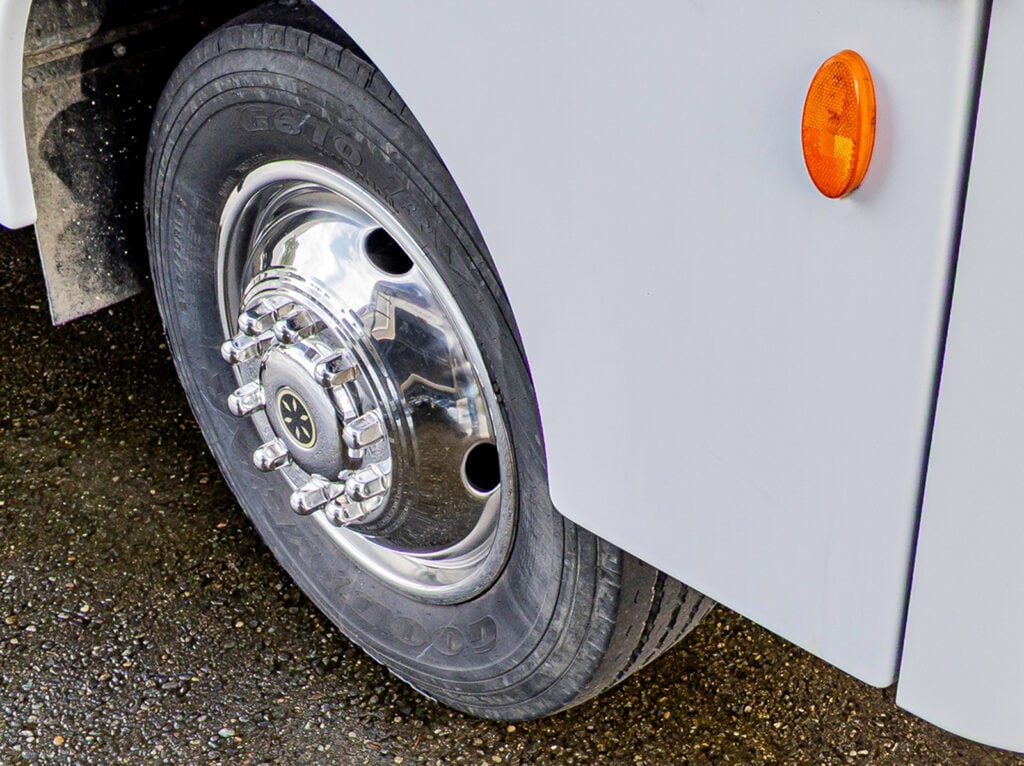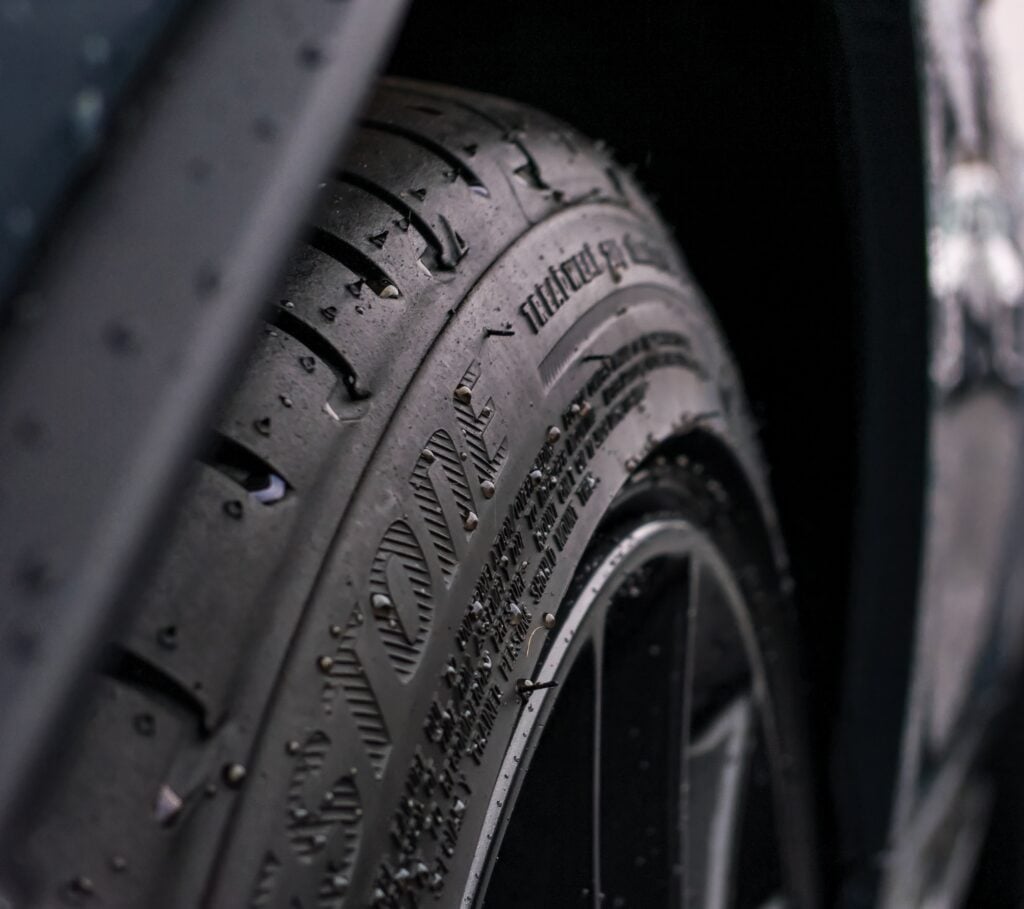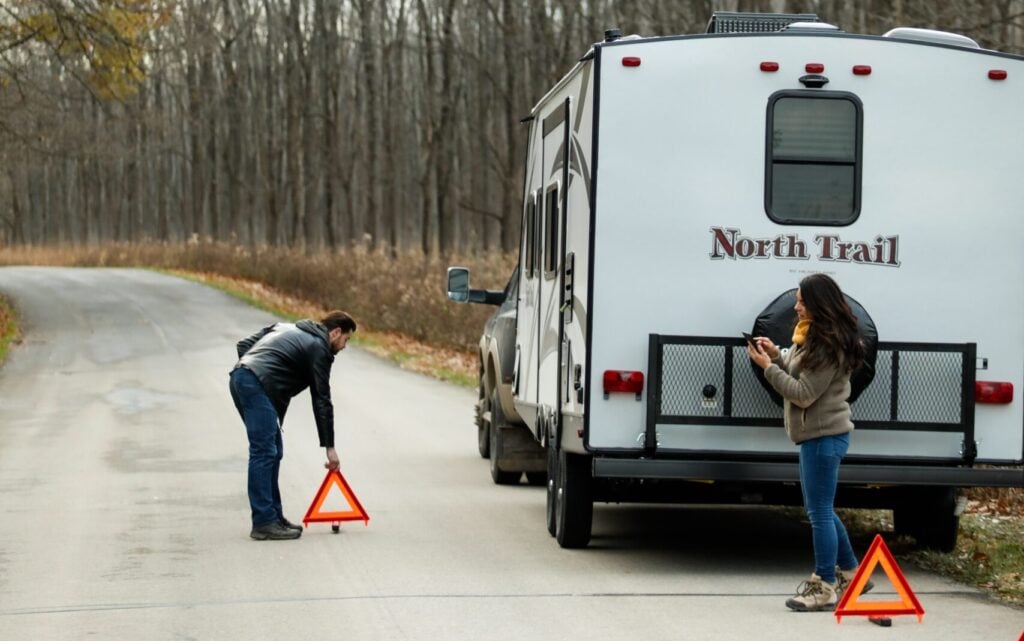
What You Should Know About Replacing Tires For An RV
Buying new tires for an RV isn’t cheap. Fortunately, by doing your research and going in prepared, you can make RV tire shopping a low-stress experience and ensure you leave with exactly what you need. Not only that, but there are some steps you can take to make sure those expensive new tires last as long as possible.
In this article, we will go over eight things you need to keep in mind when replacing tires for an RV.
1. Always replace original tires
First, it’s almost always a good idea to replace the factory tires on any RV. This is because manufacturers tend to use very low-quality tires on motorhomes and trailers. These tires have a tendency to blow out easily, something you definitely don’t want to experience in your RV.
2. Understand the reason for replacement
Besides replacing original tires, there are three reasons a tire might need to be replaced: age, wear, and damage.
If you’re replacing your tires because they are old and expired, that’s a good thing, as it means you did an excellent job caring for your tires. Or are you replacing your tires because they’re worn? As long as the wear is even, this is okay as well.
However, if you find yourself replacing your RV tires due to uneven wear or damage to the tires, you might need to change something up. Uneven wear is a sign that your motorhome is in need of an alignment. Meanwhile, if your tires are suffering from sun damage, you might want to consider covering your new set of wheels.
Paying attention to the reason you’re replacing your tires and correcting problems that may have caused the need for replacement could save you thousands of dollars. It’s also a good idea to check for recalls, such as the Goodyear RV tire recall that was recently announced, and get them replaced as soon as possible if needed.

3. Find the right type of RV tires
Obviously, you will want to make sure you buy the correct tires for your RV. Here are some of the things you’ll want to pay attention to:
Size and load rating
Always use the tire size your RV manufacturer recommends. Pay attention to the size as well as the load rating.
ST vs LT
ST tires are usually used on trailers. Meanwhile, LT tires tend to be used on trucks, vans, and motorhomes. Knowing the difference between ST and LT tires—and which ones you need—can be helpful.
Radial vs Bias Tires
Radial tires are more durable and offer both better fuel economy and a better ride, but they are significantly more expensive. Bias tires have a shorter life span but also a smaller price tag; plus, they can handle heavier loads.
Weight rating
When it comes to buying RV tires, weight rating is incredibly important. Ensure the cumulative maximum load capacity (meaning, the tires’ weight capacities added together) meets or exceeds the total gross vehicle weight rating (GVWR) of the RV.
Tread type
The type of terrain you plan to travel on matters as well. Keep this in mind and choose tires with the proper tread for your planned activities.
4. Learn the date of manufacture
Did you know tires expire? They do, and it’s important that you replace your tires before this happens. Generally speaking, tires should be replaced six years after the date they were made. Therefore, it only makes sense that you wouldn’t want to purchase a tire that was made more than a year ago.
Check the date of manufacture on tires before you buy them to ensure they will last five years or more before needing to be replaced.
5. Don’t forget the spare
If you’re purchasing a new set of tires because of age, your spare likely needs to be replaced for the same reason. Be sure to lift that spare tire cover and look for damage (as well as a manufacture date) to see if you should be replacing the spare tire along with the rest.

6. Pay for the warranty
Generally speaking, tire warranties are worth paying for. This is especially true when it comes to RV tires, as they tend to be quite expensive. A good warranty will cover you for quite a while after your purchase, so you needn’t worry about getting a dud tire or accidentally running over a screw.
Read more about RV Extended Warranties: What RV Buyers Need To Know
7. Know how to care for your new tires
Once you have a new set of tires installed, you will want to make sure to take good care of them. This will ensure the tires last as long as possible, saving you money and the hassle of shopping for new RV tires and having them installed.
Some of the things you can do to extend the life of your RV tires include:
- Make sure your motorhome wheels are properly aligned to avoid uneven wear.
- Avoid driving in areas with lots of debris in order to avoid a punctured tire.
- Keep tires covered while in storage to prevent sun damage.
- Check tire pressure before each trip and top up when necessary.
- Make sure you track your RV tire maintenance with a tool like RV LIFE Maintenance.
8. Plan for next time
Lastly, we highly recommend creating a plan for the next time your tires need to be replaced. Set a reminder in your phone for a few months before the new tires expire so you don’t forget to have them replaced, or utilize RV LIFE Maintenance to get timely reminders when you are due for new tires. Keep in mind that you may wear the tires out before that date rolls around, depending on your driving habits and/or travel frequency.
It’s a good idea to start setting money aside to save for a new set of tires right away so you aren’t caught off-guard when you do need another set. After all, nobody wants to find themselves in a situation where they can’t afford to buy tires they really need.
If possible, you’ll also want to start shopping for new RV tires in advance of when you actually need them. Some types of tires can be hard to find, and you may need to have a shop order them. Giving yourself plenty of time to do this will save you some stress.
Clearly, there’s a lot to consider when it comes to buying and caring for RV tires. Hopefully this article helps save you some hassle and maybe even a bit of money while keeping you safe on the road.
RVers looking for valuable how-to information have learned to go to the experts. Forums such as iRV2.com and blog sites like RV LIFE, Do It Yourself RV, and Camper Report provide all the information you need to enjoy your RV. You’ll also find brand-specific information on additional forums like Air Forums, Forest River Forums, and Jayco Owners Forum.
Related articles:

When you say to note the date the tires were made, are you not aware that it does not appear as a “date” (06-08-22)? It would be more helpful to show (and explain) the date code (3621).
The date code of 3621 means that the tires were manufactured the 36th week of 2021.
I put on a set of Goodyear Endurance tires last year from our experiences of two blowouts on our way to and from the Florida Keys. Also installed tire monitors on metal valve stems. I have confidence in pulling a 30 travel trailer now knowing that we are on the proactive part of maintenance instead of reactive.
Buy Goodyear at your own peril; like Ford and GM, they are trying to Kill you – and succeeding fairly well.
That’s a pretty strong claim. You seem to consider all tires or any vehicle made by a company to be of equal quality.
Consider getting a tire pressure monitoring system for your RV.
They are not expensive and can alert you if something is going wrong while you’re on the road.
I have a wireless Truck System Technologies system that displays all 6 of my tires with the exact location, tire pressure and temperature, but, there’s a lot of good systems out there.
It’s very handy to have this information right up front on the dashboard while you’re driving.
Be safe and yes, replacing your tires every 5 years is a very good idea.
Spot on. We have TPMS on our Montana; it alerted us to a leak which would have been very bad for us. We picked up a nail somewhere, but wouldn’t have found it otherwise. We will add TPMS to our 1946 Spartan Manor and our 1964 Fireball Meteor: both a single axle, so losing one of two tires is much worse than losing one of four.
Another important step is making sure that your tires are balanced!
The article fails to mention (at least I missed it) how important it is to be sure trailer tires are balanced. Unbalanced tires lead to bearing and axle failures, blowouts and refrigeration / hot water heater issues.
You have not mentioned an aspect that I feel is very important. You did not mention having the tires balanced at time of installation. Some tire sellers/installers do not think that balancing is necessary especially on Class A tires which are generally larger than other rv tires. Of course this is necessary or else the tires could have a slight bounce and thus wear out in spots with a greatly shortened life. Also, the vibration caused by an out of balance tire is very annoying when driving. I have a 40′ motorhome on full air ride and the out of balance tire is very annoying. The tire supplier argues that balancing large tires is not necessary – then why does the tire supplier have a machine that can balance large tires?
I hate to waste money unnecessarily, and there are measures that can be taken that can give tires far more than 5 years of useful service. Having said that, I would be reluctant to trust a tire for ANY amount of time if they have suffered from UV damage, extensive heat, improper inflation (which can increase that heat) or a balance or alignment condition that will cause uneven tire wear.
A big factor in blowout risk is if the sidewalls are drying out from age and or excessive UV exposure. Regular use of a UV protectant like 303 Protectant can help keep the sidewalls (I’d recommend treating both inside and outside the sidewalls) resistant to drying out and to UV damage.
A Tire Pressure Monitoring System enables you to watch the air pressure AND temperature in each tire. They have alarms that can warn you, but just watching the temperatures and pressures dutifully can give you advanced warning if anything is going in the wrong direction.
Wherever possible, I also use tires that are rated at least one load range level higher than the RV manufacturer recommends. This way if I ever get a tire losing pressure, the others have a safety margin to handle the extra load they will need to carry, even if only for a short time. I’ve seen RVers on the side of the road more than once that had a flat tire and then shortly after had another one – possibly due to overloading a “good” tire bearing additional load momentarily during the first flat.
I didn’t see anything in the article concerning speed. Most ST tires I’ve seen and used, usually specify no faster than 70 MPH. Experience has taught me that this is not a recommendation, it’s a fact. I’ve blown a few tires while or shortly after pushing them past the stated MPH.
Balancing tires with ceramic beads? No heavy equipment required, they are tossed in at mounting or liaded thru the valve stem of a deflated tire.
Many mfg’s are recommending them for large tires like 19.5 and 22.0 and trucking companies are supposedly switching to using these balancing beads instead of periodic balacing with weights.
I am investigating the hazards now, wanting more imput from anyone using them.
Bias ply tires do not carry more weight, the load rating is just that… Radial or Bias the load index tells you the capacity.
ST rated tires or Special trailer are only rated to 6o mph they are not tested higher than that.